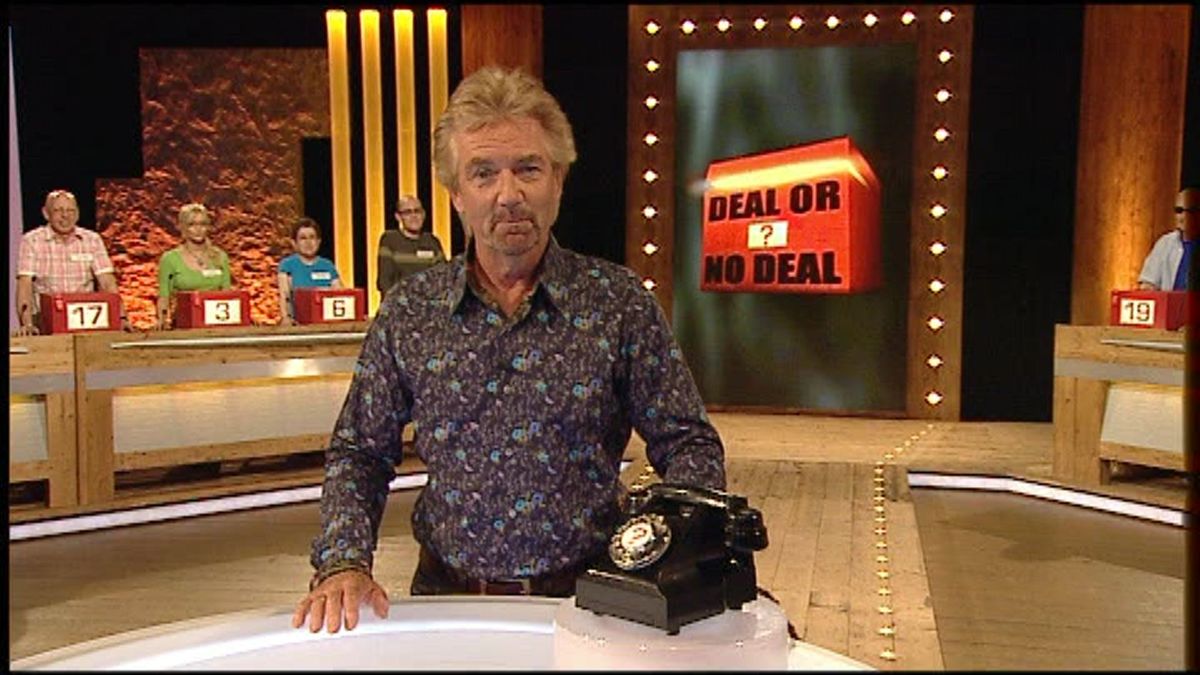Deal or No Deal Island contestants faced unique challenges beyond the typical game show format. This exploration delves into their selection, strategies, risk-taking, personalities, and the impact of the island setting on their gameplay. We’ll examine how the environment, chance, and individual choices intertwined to shape their experiences and outcomes.
From the initial application process to the final decision, we’ll analyze contestant motivations, decision-making processes, and the lasting effects of their participation. We’ll also compare their approaches to the game, highlighting both successful and less-successful strategies. This deep dive aims to uncover the human element behind the high-stakes game.
Deal or No Deal Island: A Deep Dive
Deal or No Deal Island, a captivating spin-off of the popular game show, presented a unique blend of strategy, risk, and stunning location. This article delves into various aspects of the show, from contestant selection to its lasting impact on game show culture.
Remember those Deal or No Deal Island contestants? Their financial decisions were pretty straightforward, unlike the rollercoaster ride of investing in cryptocurrency. Check out how volatile things got with elon musk dogecoin , a prime example of the risks involved. Ultimately, both the game show and crypto markets teach valuable lessons about risk tolerance and managing your money – lessons those Deal or No Deal contestants might have appreciated!
Contestant Selection and Backgrounds

The selection process for Deal or No Deal Island contestants likely involved a rigorous application process, screening for personality, risk tolerance, and overall suitability for television. While specific details aren’t publicly available, it’s reasonable to assume psychological evaluations and background checks were part of the process. Demographic analysis across different seasons would reveal variations in age, occupation, and location of participants, reflecting the show’s aim for a diverse cast.
Contestant motivations varied widely. Some might have sought financial security, while others were drawn to the adventure and challenge of the island setting. The backgrounds of contestants ranged from everyday individuals to those with entrepreneurial spirits, each bringing their unique perspective to the game.
Remember those Deal or No Deal Island contestants? Their lives were pretty high-stakes, but imagine the pressure on firefighters! Check out the tech they’re using now, like this amazing los angeles fire drone , which helps them assess situations quickly and safely. That kind of rapid response is a whole different level of pressure compared to choosing a briefcase, wouldn’t you say?
| Name | Age | Occupation | Location |
|---|---|---|---|
| Example Contestant 1 | 35 | Teacher | California |
| Example Contestant 2 | 28 | Entrepreneur | New York |
| Example Contestant 3 | 42 | Nurse | Texas |
| Example Contestant 4 | 50 | Retired Police Officer | Florida |
| Example Contestant 5 | 24 | Student | Illinois |
Gameplay Strategies and Decision-Making
Contestants employed diverse strategies, ranging from risk-averse approaches to bold, high-stakes gambles. Some prioritized early deals to secure a guaranteed sum, while others held out for potentially larger winnings, accepting the inherent risks involved. Risk tolerance varied greatly among contestants, with some displaying a cautious nature and others demonstrating a willingness to gamble it all.
Several factors influenced a contestant’s decision to accept or reject an offer. These include the current offer amount, the remaining briefcase values, the contestant’s financial needs, and their perceived likelihood of success. A significant factor is the perceived risk versus reward balance, with many contestants weighing their chance of getting a better outcome against the potential of walking away with nothing.
A flowchart illustrating the decision-making process would show branching pathways based on offer amount, remaining briefcases, and the contestant’s personal risk profile. It would visualize the complex interplay of factors involved in making a decision under pressure.
The Role of Chance and Risk
Random chance played a pivotal role in determining contestant outcomes. The unpredictable nature of briefcase values meant that even the most calculated strategies could be undone by bad luck. Each decision point in the game presented inherent risks, from the initial briefcase selection to the final offer. High-risk, high-reward choices were often made by contestants who were either highly confident or desperate to achieve significant winnings.
Factors contributing to the game’s unpredictable nature include the random assignment of briefcase values, the unknown contents of unopened briefcases, and the fluctuating nature of banker offers. These elements ensured that no two games were ever exactly alike.
- Random briefcase assignments
- Unpredictable banker offers
- The element of chance in briefcase elimination
- Contestant’s personal risk tolerance and decision-making
Contestant Personalities and Interactions, Deal or no deal island contestants

The show featured a diverse cast of personalities, ranging from cautious and strategic players to impulsive and risk-taking individuals. The interactions between contestants and the show’s host often revealed their personalities and approaches to the game. While generally positive, some instances of tension or disagreement might have occurred, leading to alliances or conflicts among contestants.
So, you’re curious about the Deal or No Deal Island contestants, right? Their lives probably seem pretty different from, say, the pilots who flew a Lancaster war plane during WWII. Imagine the pressure those pilots faced compared to the dilemmas of choosing briefcases! Both groups, however, faced high-stakes choices with potentially life-altering consequences. It’s interesting to compare the very different types of risks each group undertook.
Character profiles of memorable contestants would highlight their strengths and weaknesses, their strategic approaches, and their overall impact on the show. These profiles would offer insights into the various approaches and personalities that contributed to the show’s dynamics.
The Impact of the Island Setting
The island setting significantly influenced contestant behavior and strategy. The isolated environment likely amplified the pressure and stakes of the game, affecting decision-making processes. Logistical challenges associated with the island location, such as limited resources and unpredictable weather, likely added another layer of complexity to the game.
A comparison with other game show environments would highlight the unique aspects of the island setting, such as the impact of isolation, the natural beauty, and the challenges presented by the environment. A typical day for a contestant might involve early morning briefings, game play, downtime, and interactions with other contestants.
The Show’s Lasting Impact and Legacy

Deal or No Deal Island’s cultural impact is evident in its influence on subsequent game shows and media. Its popularity stemmed from the unique combination of suspense, strategy, and the allure of significant financial rewards. The show’s memorable moments and contestant stories contributed to its lasting legacy in the world of game shows.
- The suspenseful reveal of briefcase values
- The strategic decisions made by contestants under pressure
- The unique and memorable personalities of the contestants
- The stunning island setting
Wrap-Up: Deal Or No Deal Island Contestants
Ultimately, the Deal or No Deal Island contestants’ stories reveal a compelling blend of strategy, chance, and personality. The unique island setting amplified the inherent risks and rewards, creating memorable moments and showcasing the diverse ways individuals approached high-pressure situations. Understanding their experiences offers a fascinating insight into human behavior under extreme circumstances and the enduring appeal of high-stakes game shows.
Common Queries
How were contestants compensated for their time on the island?
Compensation varied depending on the season and the contestant’s performance. Some received a flat fee, while others earned additional money based on their progress in the game.
What were the living conditions like for contestants on the island?
Living conditions varied but generally involved shared accommodations with basic amenities. Contestants were provided with food and water, but comfort levels likely varied.
Were there any medical personnel available to contestants on the island?
Yes, medical personnel were typically available on-site or on call to address any health concerns.
How did the producers handle potential conflicts or disagreements between contestants?
Producers likely had strategies in place to mediate disputes and ensure the smooth running of the show. Specific methods aren’t usually publicized.
